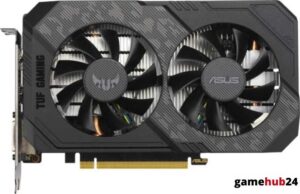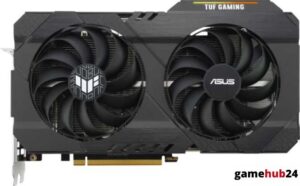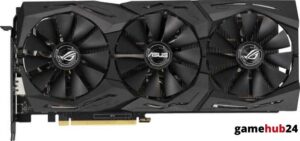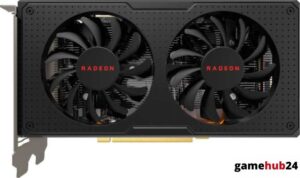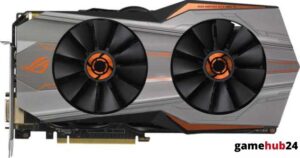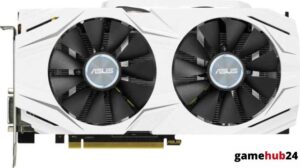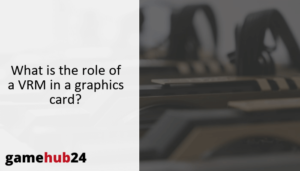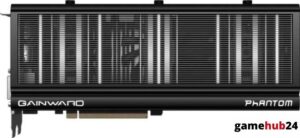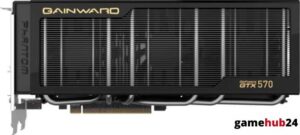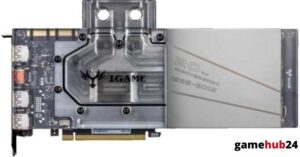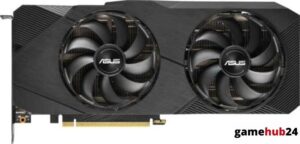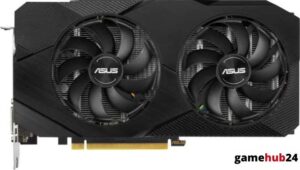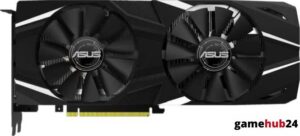Video Game In the realm of computer hardware, TDP is essential, especially when it comes to Graphics Processing Units (GPUs). Learn how TDP affects GPU performance, how much power it uses, and what kind of cooling it needs.
Divesting into the intricate realm of computer hardware, we have looked at the vital function of Thermal Design Power (TDP) in GPUs. It has been found that power consumption and GPU performance are directly impacted by TDP, or total heat dissipation. A more powerful GPU is indicated by a higher TDP, but this also means that a strong cooling system is required. Additionally, we now know that TDP plays a significant role in overclocking, influencing the core and boost clock speeds of the GPU. TDP also affects the design of the cooling system and the selection of the power supply unit. Lastly, we’ve noticed that different GPU manufacturers have varied approaches to handling TDP, which can be attributed to things like power management technology and GPU design.
- Thermal Design Power (TDP) is a critical metric in computer hardware, particularly for GPUs.
- TDP directly influences GPU performance, power consumption, and cooling requirements.
- A higher TDP often indicates a more powerful GPU, but it also necessitates a robust cooling system.
- TDP is a key factor when overclocking, affecting the GPU’s core clock and boost clock speeds.
- TDP impacts the choice of power supply unit and the design of the cooling system.
- Different GPU manufacturers handle TDP in various ways, influenced by factors such as GPU architecture and power management technologies.
What is the role of thermal design power in computer hardware?
In computer hardware, Thermal Design Power (TDP) is essential, especially for the Graphics Processing Unit (GPU). The total dynamic power output (TDP) of a system or chip, such as a GPU, measures the greatest amount of heat it may release while performing at peak efficiency. The performance and power consumption of the GPU are directly correlated with this heat output. A GPU with a higher TDP is typically more powerful, but it also produces more heat. This means that in order to avoid overheating and preserve peak performance, a strong cooling system is required. When developing or upgrading a computer system, understanding TDP is essential since it affects the selection of components like the cooling system and power supply unit.
What is the correlation between GPU TDP and power consumption?
Power usage and GPU TDP are inextricably connected. The greatest heat a GPU is capable of producing is measured by its TDP, which is directly correlated with its power consumption. In essence, a GPU produces more heat and so has a greater TDP when it uses more power. For system enthusiasts and builders, this correlation is essential since it helps them determine the power requirements of their systems and choose the right power supply unit. It also helps in figuring out how much cooling is needed to maintain the GPU’s temperature within tolerance.
How does thermal design power affect the GPU core clock?
The thermal design power greatly affects the GPU core clock, or the frequency at which the GPU executes its calculations. Improved performance results from a greater TDP since it permits a higher core clock speed. On the other hand, more heat is produced as a result of this. The GPU may impair performance by throttling its core clock speed in order to reduce heat creation if its cooling capacity is insufficient to dissipate this heat. Therefore, sustaining high GPU core clock speeds and optimal performance requires effective TDP management.
Were you aware? Since its introduction by Intel, other manufacturers such as AMD and NVIDIA have adopted the term TDP. Nevertheless, TDP is not always easily comparative between GPUs because every manufacturer calculates it differently.
What is the impact of GPU TDP on the GPU boost clock?
The GPU boost clock, which enables the GPU to run at a speed higher than its base clock speed for improved performance, is significantly influenced by GPU TDP. Extended periods of higher boost clock speeds can be sustained by the GPU while it operates within its TDP constraints. To avoid overheating, the GPU may lower the boost clock speed if it surpasses its TDP. As a result, a GPU may maintain higher boost clock speeds with proper TDP management, leading to a noticeable performance increase.
How does GPU TDP relate to the GPU cooling system?
In computer hardware design, the interaction between GPU TDP and the cooling system is crucial. In order to dissipate the heat and avoid thermal throttling, a GPU with a high TDP needs a more effective cooling system. For the cooling system to maintain ideal operating temperatures, it must be able to handle the GPU’s TDP. Possible cooling system components include fans, liquid coolers, and heat sinks. Therefore, while constructing or selecting a cooling system, it is crucial to comprehend the TDP of the GPU.
What is the role of a heat sink in managing GPU TDP?
In order to control GPU TDP, a heat sink is essential. It is a part of the cooling system that takes in and lets go of the heat that the GPU produces. The material and design of the heat sink have a big impact on how well it can manage the TDP of the GPU. Higher TDPs can be managed via a bigger, more effective heat sink, which keeps the GPU from overheating while maintaining higher performance levels. Consequently, selecting the right heat sink is essential to properly controlling the GPU’s TDP.
How does the GPU cooling system control thermal design power?
By distributing the heat produced by the GPU, the cooling mechanism for the GPU regulates TDP. This includes parts such as fans, heat sinks, and even liquid cooling systems. The GPU is kept within its temperature limit by the combined action of these parts. The cooling system keeps thermal throttling at bay by efficiently controlling the GPU’s TDP, which enables the GPU to run at greater performance levels for longer periods of time.
The TDP of your GPU should always be taken into account when designing a PC. A larger wattage power supply and an enhanced cooling system are necessary for a GPU with a high TDP. This will guarantee that your system doesn’t overheat and operates smoothly.
What is the relationship between GPU temperature and TDP?
There is a clear correlation between GPU temperature and TDP. Operating temperatures rise when the GPU generates more heat due to a greater TDP. Thermal throttling or even hardware damage may result from the GPU temperature rising above safe operating limits if the cooling system is unable to adequately disperse the heat. Thus, keeping safe GPU temperatures requires knowing the GPU’s TDP and making sure the cooling system can manage it.
What is the significance of GPU TDP in overclocking?
When overclocking—configuring a GPU to run at frequencies higher than its basic clock speed—GPU TDP plays a major role in optimizing performance. A greater TDP results from overclocking since it increases the GPU’s power consumption and heat production. The performance advantages of overclocking may be lost if the GPU throttles its clock speed to avoid overheating if its cooling system is unable to manage the higher TDP. Therefore, one of the most important aspects of successfully overclocking a GPU is to understand and manage its TDP.
How does overclocking influence GPU TDP?
Overclocking raises the power and heat generation of the GPU, which has a direct impact on GPU TDP. The GPU uses more power and produces more heat when it runs at frequencies higher than its basic clock speed, which raises the TDP. To keep the performance advantages of overclocking and avoid overheating, the cooling system must efficiently control this increased TDP. As a result, overclocking requires both a strong cooling system and a comprehensive understanding of GPU TDP.
What is the effect of GPU voltage on thermal design power during overclocking?
The GPU voltage significantly affects the thermal design power during overclocking. Performance can be improved by raising the GPU voltage because it enables greater clock speeds. But doing so also raises the GPU’s heat production and power consumption, which raises the TDP. In order to keep against overheating, the GPU may reduce its clock speed if the cooling system is unable to manage the higher TDP. Thus, during overclocking, controlling GPU voltage and comprehending how it affects TDP are essential.
How does GPU TDP limit the potential for overclocking?
GPU TDP has the ability to restrict overclocking capability. A greater TDP results from overclocking since it increases the GPU’s power consumption and heat production. The performance advantages of overclocking may be limited if the GPU throttles its clock speed to avoid overheating if the cooling system is unable to withstand this increased TDP. Therefore, when preparing to overclock a GPU, it is important to take into account the GPU’s TDP since it may act as a limiting factor.
How does GPU TDP affect the power supply unit?
The power supply unit is directly impacted by GPU TDP (PSU). A larger wattage PSU is needed when using a GPU with a high TDP because it consumes more power. The system may become unstable or the GPU may not perform to its maximum capacity if the PSU is unable to provide the required power. In order to ensure that the PSU can provide enough power for the GPU and the rest of the system, it is crucial to understand the GPU’s TDP when selecting a PSU.
What is the role of GPU power connectors in managing TDP?
The management of TDP is significantly influenced by GPU power connectors. These connectors allow the GPU to receive power from the PSU. A GPU’s power consumption and TDP can be inferred from the kind and quantity of power connectors it has. High TDP GPUs frequently need extra or higher rated power connectors. Thus, controlling TDP and making sure the GPU gets enough power can be made easier by being aware of the function of GPU power connectors.
How does GPU power limit relate to the thermal design power?
The thermal design power has a close relationship with the GPU power limit. A user-adjustable option that caps the GPU’s power consumption is called the power limit. Users can regulate the GPU’s TDP, which affects heat generation and performance, by varying the power limit. greater performance is possible with a greater power limit, but this comes with a higher TDP and necessitates a more effective cooling system. Therefore, controlling GPU performance and heat output requires an understanding of the link between the GPU power limit and TDP.
Why is understanding GPU TDP important for choosing the right power supply unit?
Since GPU TDP helps determine the GPU’s power consumption, it is crucial to understand it while selecting a power supply unit (PSU). A larger wattage PSU is required to give the necessary power to a GPU with a high TDP. The GPU might not perform to its maximum capacity or the system might become unstable if the PSU is unable to supply enough power. Thus, choosing a PSU that can sufficiently power your system can be aided by knowing the GPU’s TDP.
How do different GPU manufacturers handle TDP?
The way that different GPU manufacturers handle TDP varies depending on things like power management technology, cooling strategies, and GPU architecture. Different manufacturers, such as NVIDIA, AMD, and Intel, have different strategies for controlling TDP, which can have an impact on the GPUs’ output, power consumption, and performance. Users can select a GPU that best suits their requirements and system specifications by being aware of these differences.

How does GPU architecture influence thermal design power?
Thermal design power is greatly influenced by GPU architecture. The TDP of the GPU is directly impacted by the power efficiency of various architectures, which can vary widely. Reduced TDP is the outcome of using more energy-efficient architectures, which can provide more performance while using less power. Thus, selecting a GPU that provides the ideal mix of performance and power efficiency for a given set of requirements can be made easier for users by knowing how GPU design affects TDP.
What are the differences in TDP between various GPU manufacturers?
The TDP of different GPU manufacturers varies noticeably. These variations are caused by things like cooling techniques, power management methods, and GPU design. For instance, because of their more power-efficient architecture, NVIDIA GPUs frequently have a lower TDP than AMD GPUs. AMD’s GPUs, however, have the potential to provide better performance at a greater TDP. Users can select a GPU that best suits the power and cooling capabilities of their system by being aware of these variations.
How do graphics card manufacturers design for optimal TDP?
Manufacturers of graphics cards balance performance, power consumption, and heat production in their designs to get the best TDP. This entails developing strong cooling systems, putting into practice efficient power management technologies, and improving the GPU architecture. Manufacturers are able to create GPUs that give excellent performance at an acceptable TDP by skillfully regulating these aspects. This guarantees that the GPU won’t overheat while operating at maximum capacity, giving users dependable and effective computing.


